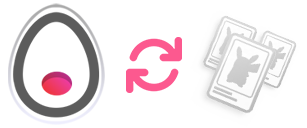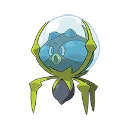
Nests allow you to play like it's Community Day, Everyday.
Nests in Pokémon Go are geographical areas with set boundaries such as local parks, where a specific Pokémon species spawns at a significantly higher rate than it normally would.
Here's a video from PokeDaxi explaining Nests.
Nests Rotate Every 2 Weeks.
Every 2nd Wednesday at 5PM Pacific Time.
Nests will last for a period of 2 weeks unless a forced migration occurs*, which happens when new Pokémon are introduced into the game. *Example: A nest was Shroomish for 8 days, and new Pokémon then became introduced into the game. The Shroomish nest will be forced to migrate to a different species for the remainder of the cycle which in this case, would be the remaining 6 days.How are Nests useful?

Candy & Candy XL
Grind candy and stock up on Candy XL for top meta relevant Pokémon to power up for PVE Raid Battles or the PVP Go Battle League.
- Top Raid Attackers Nesting: Mudkip, Swinub, Machop, Gastly, Electabuzz, and more.
- Top PVP Meta Pokémon Nesting: Noctowl, Onix, Chinchou, Marill, Sableye, and more.

Shiny Hunting
With a higher rate of spawns, you have a greater chance of encountering a shiny. Pick and choose your next shiny hunt adventure!
- Shiny Boosted Nests:
1/64 Permaboosted Pokémon available through nests include Onix, Lickitung, Skarmory, Scyther, Pineco, and more.

Boosted Stardust
Nests are a great way to stock up on Stardust especially during boosted stardust events. Many Pokémon available through nests award extra stardust. To name a few:
- Meowth, Foongus, and Shroomish Nests
500 Stardust per catch. - Sableye Nests
750 Stardust per catch. - Shellder Nests
1000 Stardust per catch. - Audino Nests
2100 Stardust per catch.
What Pokémon Can Nest?
The Nest Pool is constantly growing.
Here are the current known species that nest.
 Bulbasaur
Bulbasaur
 Charmander
Charmander
 Squirtle
Squirtle
 Caterpie
Caterpie
 Weedle
Weedle
 Pidgey
Pidgey
 Rattata
Rattata
 Spearow
Spearow
 Ekans
Ekans
 Pikachu
Pikachu
 Sandshrew
Sandshrew
 Nidoran Female
Nidoran Female
 Nidoran Male
Nidoran Male
 Clefairy
Clefairy
 Vulpix
Vulpix
 Jigglypuff
Jigglypuff
 Zubat
Zubat
 Oddish
Oddish
 Paras
Paras
 Venonat
Venonat
 Diglett
Diglett
 Meowth
Meowth
 Psyduck
Psyduck
 Mankey
Mankey
 Growlithe
Growlithe
 Poliwag
Poliwag
 Abra
Abra
 Machop
Machop
 Bellsprout
Bellsprout
 Weepinbell
Weepinbell
 Tentacool
Tentacool
 Geodude
Geodude
 Ponyta
Ponyta
 Slowpoke
Slowpoke
 Magnemite
Magnemite
 Doduo
Doduo
 Seel
Seel
 Grimer
Grimer
 Shellder
Shellder
 Gastly
Gastly
 Onix
Onix
 Drowzee
Drowzee
 Krabby
Krabby
 Voltorb
Voltorb
 Hisuian Voltorb
Hisuian Voltorb
 Exeggcute
Exeggcute
 Cubone
Cubone
 Lickitung
Lickitung
 Koffing
Koffing
 Rhyhorn
Rhyhorn
 Tangela
Tangela
 Horsea
Horsea
 Goldeen
Goldeen
 Staryu
Staryu
 Scyther
Scyther
 Jynx
Jynx
 Electabuzz
Electabuzz
 Magmar
Magmar
 Pinsir
Pinsir
 Magikarp
Magikarp
 Eevee
Eevee
 Omanyte
Omanyte
 Kabuto
Kabuto
 Chikorita
Chikorita
 Cyndaquil
Cyndaquil
 Totodile
Totodile
 Sentret
Sentret
 Hoothoot
Hoothoot
 Ledyba
Ledyba
 Spinarak
Spinarak
 Chinchou
Chinchou
 Togetic
Togetic
 Natu
Natu
 Mareep
Mareep
 Marill
Marill
 Sudowoodo
Sudowoodo
 Hoppip
Hoppip
 Skiploom
Skiploom
 Aipom
Aipom
 Sunkern
Sunkern
 Yanma
Yanma
 Wooper
Wooper
 Murkrow
Murkrow
 Misdreavus
Misdreavus
 Wobbuffet
Wobbuffet
 Girafarig
Girafarig
 Pineco
Pineco
 Dunsparce
Dunsparce
 Snubbull
Snubbull
 Qwilfish
Qwilfish
 Shuckle
Shuckle
 Sneasel
Sneasel
 Teddiursa
Teddiursa
 Slugma
Slugma
 Swinub
Swinub
 Remoraid
Remoraid
 Mantine
Mantine
 Skarmory
Skarmory
 Houndour
Houndour
 Phanpy
Phanpy
 Stantler
Stantler
 Miltank
Miltank
 Treecko
Treecko
 Torchic
Torchic
 Mudkip
Mudkip
 Poochyena
Poochyena
 Zigzagoon
Zigzagoon
 Wurmple
Wurmple
 Lotad
Lotad
 Seedot
Seedot
 Taillow
Taillow
 Wingull
Wingull
 Ralts
Ralts
 Surskit
Surskit
 Shroomish
Shroomish
 Slakoth
Slakoth
 Nincada
Nincada
 Whismur
Whismur
 Makuhita
Makuhita
 Nosepass
Nosepass
 Skitty
Skitty
 Sableye
Sableye
 Aron
Aron
 Meditite
Meditite
 Electrike
Electrike
 Plusle
Plusle
 Minun
Minun
 Roselia
Roselia
 Gulpin
Gulpin
 Carvanha
Carvanha
 Wailmer
Wailmer
 Numel
Numel
 Spoink
Spoink
 Trapinch
Trapinch
 Cacnea
Cacnea
 Swablu
Swablu
 Barboach
Barboach
 Corphish
Corphish
 Baltoy
Baltoy
 Lileep
Lileep
 Anorith
Anorith
 Shuppet
Shuppet
 Duskull
Duskull
 Snorunt
Snorunt
 Spheal
Spheal
 Luvdisc
Luvdisc
 Turtwig
Turtwig
 Chimchar
Chimchar
 Piplup
Piplup
 Starly
Starly
 Bidoof
Bidoof
 Kricketot
Kricketot
 Burmy Plant Cloak
Burmy Plant Cloak
 Burmy Sandy Cloak
Burmy Sandy Cloak
 Burmy Trash Cloak
Burmy Trash Cloak
 Combee
Combee
 Buizel
Buizel
 Cherrim Overcast Form
Cherrim Overcast Form
 Buneary
Buneary
 Glameow
Glameow
 Stunky
Stunky
 Bronzor
Bronzor
 Hippopotas
Hippopotas
 Skorupi
Skorupi
 Croagunk
Croagunk
 Finneon
Finneon
 Snover
Snover
 Snivy
Snivy
 Tepig
Tepig
 Oshawott
Oshawott
 Patrat
Patrat
 Lillipup
Lillipup
 Herdier
Herdier
 Purrloin
Purrloin
 Munna
Munna
 Pidove
Pidove
 Blitzle
Blitzle
 Roggenrola
Roggenrola
 Woobat
Woobat
 Drilbur
Drilbur
 Excadrill
Excadrill
 Audino
Audino
 Tympole
Tympole
 Sewaddle
Sewaddle
 Venipede
Venipede
 Cottonee
Cottonee
 Petilil
Petilil
 Darumaka
Darumaka
 Dwebble
Dwebble
 Trubbish
Trubbish
 Minccino
Minccino
 Gothita
Gothita
 Solosis
Solosis
 Ducklett
Ducklett
 Vanillite
Vanillite
 Deerling Spring Form
Deerling Spring Form
 Deerling Autumn Form
Deerling Autumn Form
 Deerling Summer Form
Deerling Summer Form
 Deerling Winter Form
Deerling Winter Form
 Karrablast
Karrablast
 Foongus
Foongus
 Joltik
Joltik
 Ferroseed
Ferroseed
 Tynamo
Tynamo
 Elgyem
Elgyem
 Cubchoo
Cubchoo
 Shelmet
Shelmet
 Stunfisk
Stunfisk
 Golett
Golett
 Rufflet
Rufflet
 Chespin
Chespin
 Fennekin
Fennekin
 Froakie
Froakie
 Bunnelby
Bunnelby
 Fletchling
Fletchling
 Litleo
Litleo
 Spritzee
Spritzee
 Swirlix
Swirlix
 Binacle
Binacle
 Clauncher
Clauncher
 Helioptile
Helioptile
 Dedenne
Dedenne
 Phantump
Phantump
 Pikipek
Pikipek
 Yungoos
Yungoos
 Grubbin
Grubbin
 Crabrawler
Crabrawler
 Cutiefly
Cutiefly
 Dewpider
Dewpider
 Fomantis
Fomantis
 Morelull
Morelull
 Stufful
Stufful
 Wimpod
Wimpod
 Lechonk
Lechonk
 Nymble
Nymble
 Smoliv
Smoliv
How do you identify a Nest?

Find nests in parks / green zones.
Nests appear in most if not ALL parks. Nestable areas will appear a darker green on the Pokémon Go map in-game.
More frequent encounters
A Nest can be identified by a certain species of Pokémon that is spawning a lot more than usual in a given area.
Pokémon is outside of usual spawn pool.
The giveaway at times may be encountering a large amount of a Pokémon species that is not in the current spawn pool during an event for example.
Easier to discover in larger parks.
The Nesting Species is always easiest to identify at larger parks where they are likely to spawn more often and in larger clusters.Set off on your journey, Trainer!
Have you stumbled upon a nest?
Let us know and we'll share it with the local trainer community!Report a Nest!
Browse all Nest Discoveries.
Ready for an adventure? Browse nests that other fellow trainers have discovered nearby.View All Nests

 Trainer! Consider adding PoGo Nest to your home screen for quick access to Pokémon Go insights.
Trainer! Consider adding PoGo Nest to your home screen for quick access to Pokémon Go insights.
